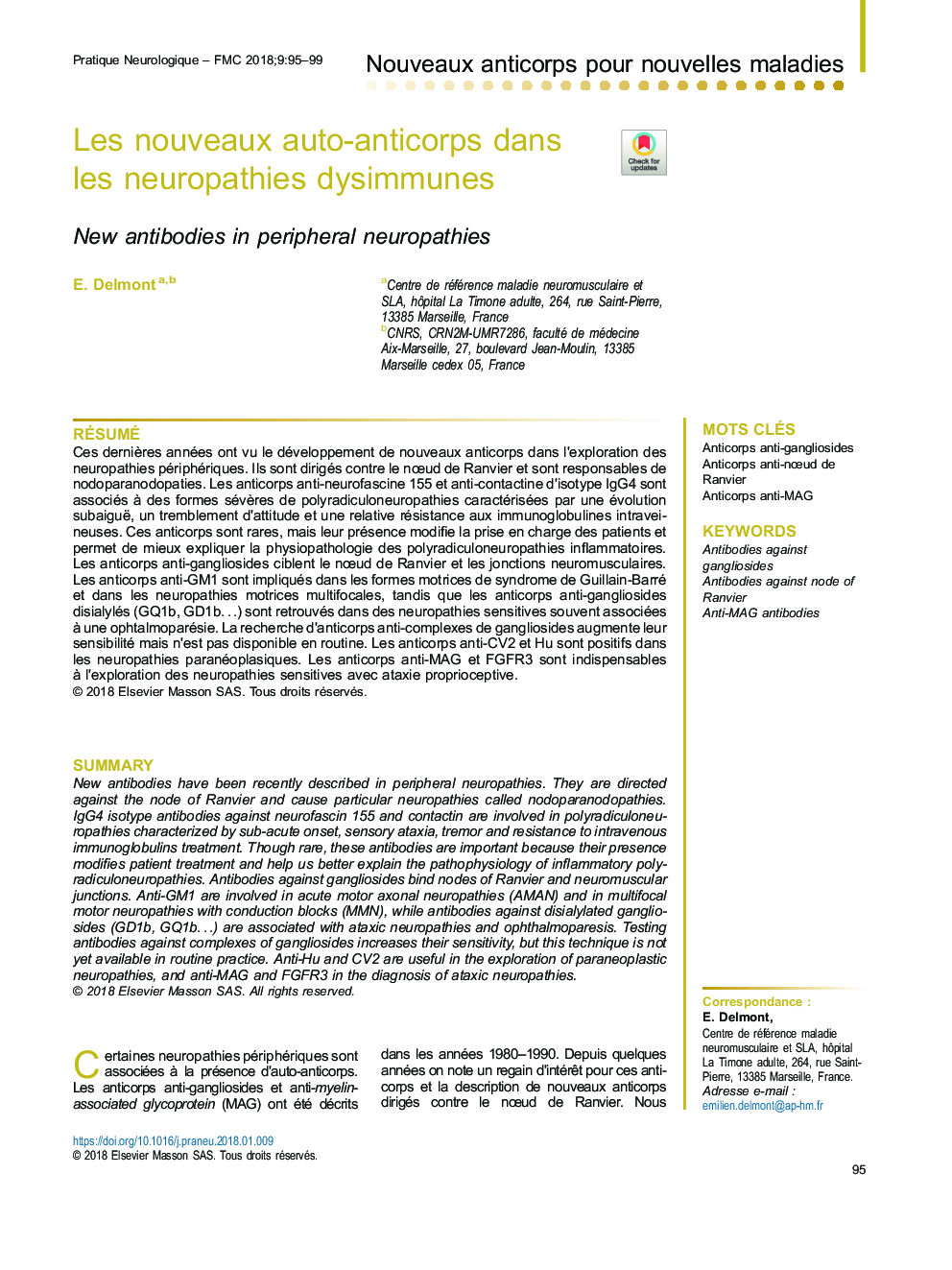| Article ID | Journal | Published Year | Pages | File Type |
|---|---|---|---|---|
| 8690605 | Pratique Neurologique - FMC | 2018 | 5 Pages |
Abstract
New antibodies have been recently described in peripheral neuropathies. They are directed against the node of Ranvier and cause particular neuropathies called nodoparanodopathies. IgG4 isotype antibodies against neurofascin 155 and contactin are involved in polyradiculoneuropathies characterized by sub-acute onset, sensory ataxia, tremor and resistance to intravenous immunoglobulins treatment. Though rare, these antibodies are important because their presence modifies patient treatment and help us better explain the pathophysiology of inflammatory polyradiculoneuropathies. Antibodies against gangliosides bind nodes of Ranvier and neuromuscular junctions. Anti-GM1 are involved in acute motor axonal neuropathies (AMAN) and in multifocal motor neuropathies with conduction blocks (MMN), while antibodies against disialylated gangliosides (GD1b, GQ1bâ¦) are associated with ataxic neuropathies and ophthalmoparesis. Testing antibodies against complexes of gangliosides increases their sensitivity, but this technique is not yet available in routine practice. Anti-Hu and CV2 are useful in the exploration of paraneoplastic neuropathies, and anti-MAG and FGFR3 in the diagnosis of ataxic neuropathies.
Keywords
Related Topics
Life Sciences
Neuroscience
Neurology
Authors
E. Delmont,
